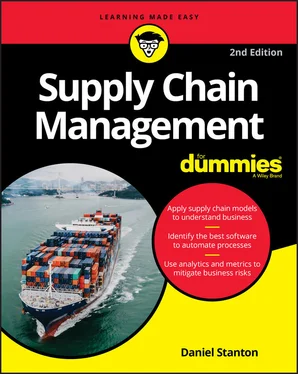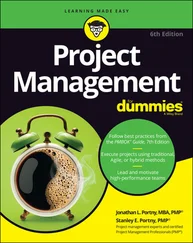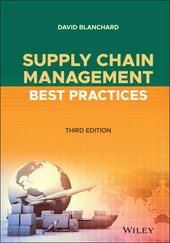1 ...8 9 10 12 13 14 ...19
Step 2: Recognize your competitors
The next step in prioritizing your supply chain goals is recognizing your competitors. In the age of e-commerce, your competitors may not be who you think they are. Many traditional retail stores, for example, have been slow to realize that their most aggressive competitor is not another brick-and-mortar store, but a website: Amazon.com. Amazon.com isn’t competing only with retailers, however; it’s also competing with trucking companies, warehousing and distribution companies, and even technology companies such as Apple and Microsoft.
To understand who your real competitors are, you need to stop thinking about the product or service that you sell and start thinking about the problem that it solves. Clayton Christensen of Harvard Business School called this approach to matching your product with a customer’s problem the Jobs to Be Done Theory. Think about what “job” your product or service does for your customers and what other products or services might be able to do that same job better, faster, or cheaper. These alternative products (or services) are your product’s real competitors, and you need to design and manage your supply chain so that your product can do that same job better than its competitors.
Step 3: Understand your products or services
The next step in prioritizing your supply chain goals is understanding the characteristics of your products or services. The easiest way to illustrate this step is to show how different kinds of products need to achieve different goals to deliver the greatest value to their customers.
WHAT JOB DOES A MILKSHAKE DO?
Professor Clayton Christensen gave a great example of his Jobs To Be Done Theory by telling a story about the managers of a fast-food restaurant who wanted to analyze their sales of milkshakes. The restaurant was selling lots of milkshakes early in the morning, and the managers couldn’t understand why. After interviewing their customers, they discovered that people were buying milkshakes at the beginning of their commute because it gave them something to do while they were stuck in traffic. In other words, the milkshake wasn’t just food; it was also entertainment! Understanding what their customers truly valued about the product helped the managers of the fast-food restaurant think differently about how to package the product, manage their business, and design their supply chain.
Table 3-1and the sections that follow describe supply chain priorities for different kinds of products. These examples are definitely not an exhaustive list of supply chains, but they illustrate why the supply chain for corn, for example, has different priorities from the supply chain for computers.
TABLE 3-1Supply Chain Priorities
| Product Type |
Supply Chain Priorities |
| Commodities |
Low price, high availability, minimum quality standards |
| Luxury goods |
High quality, uniqueness |
| Fashion goods |
Fast throughput, low inventory, wide variety |
| Durable goods |
Balance between transportation/inventory cost and customer needs |
| Technology |
Speed, flexibility, security |
Commodities are things that are easy to find and easy to substitute. Common examples are food crops, metal ores, and gasoline. Because it’s so easy to substitute commodities from one supplier for commodities from another supplier, most people buy commodities wherever they can get what they need for the lowest price. Therefore, commodity supply chains need to have high availability, meet minimum quality standards, and be cheap.
Luxury goods like high-end cars and jewelry are all about quality and variety. When customers are purchasing luxury goods, they want something in just the right size and color, and they don’t want everyone else to have the same item. Also, ensuring that luxury goods are free of defects and damage is essential. Supply chains for luxury goods need to accommodate a wide assortment of products with plenty of protection to keep them safe.
Fashion goods like shoes and purses are all about selection and timing. Because styles change quickly, fashion supply chains need to transform ideas into products and get them sold to customers before the products become passé. Keeping the right amount of inventory is a delicate balance for fashion: If you don’t have products in stock, you can’t sell them. But if an item sits around in inventory for too long, it may fall out of style. Supply chains for fashion need to focus on speed and flexibility.
Durable goods, like household appliances, are heavy, and they need to last a long time. They’re also expensive, so they consume capital when they’re sitting in inventory. Making durable goods takes a long time, however, and customers usually don’t want to wait a long time for them. (If your refrigerator goes out, you want to have a new one delivered right away.) Durable goods can also face tough competition for pricing, and shipping big, heavy items can get expensive. Supply chains for durable goods need to balance the cost of keeping inventory available close to where the customers will want it with the cost of transporting the products and keeping them in inventory.
Technology products — such as computers, television sets, and electronics equipment — tend to be light and expensive. They also tend to become obsolete quickly. Technology products are sensitive to moisture damage and are vulnerable to theft. Supply chains for technology products need to be fast, flexible, and secure.
Most supply chain managers spend a lot of their time looking for ways to reduce costs. But one of the big challenges with supply chains is that things are often interconnected, so making a change in one area to lower costs can cause a change somewhere else that actually increases the cost. That’s not to say that you shouldn’t look for cost-savings opportunities, but you need to understand how the system works to ensure that you aren’t creating new problems in the process.
Four decision areas drive most of the costs in any supply chain, and I describe them in the following sections. Thinking about all these items together can help you find true opportunities for savings.
One of the most obvious costs for any supply chain is the amount that you pay for the products and services you buy. Some common ways to reduce procurement costs are to negotiate better prices from your suppliers, agree to buy larger quantities over a longer period, or switch to a supplier that agrees to accept lower prices. Also, each supplier that you maintain a relationship with costs you money, because someone has to find the supplier, sign all the contracts, keep track of the supplier’s performance, and make sure the supplier gets paid. So the cost for procurement also includes the salaries and overhead for your procurement team and the information systems that they use. Reducing the number of suppliers and streamlining your procurement processes can often reduce procurement costs.
Moving a product from one place to another costs money, and different modes of transportation have different costs. These modes have different speeds, which can be just as important as transportation cost. A faster and more expensive transportation mode might actually save you money by decreasing the amount of inventory that you have in transit, for example. It’s also common to use more than one mode of transportation to move a single product through a supply chain. Changing from one mode to another by using multimodal transportation can optimize transportation costs. Another common way to reduce transportation costs is to pack more products into each load, thereby improving capacity utilization. The important thing to remember is that choosing a transportation mode that is slower and less reliable may reduce transportation costs, but it will increase your inventory and consume working capital.
Читать дальше












